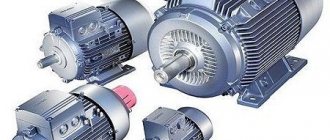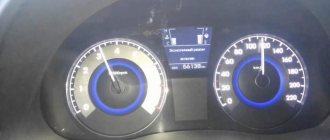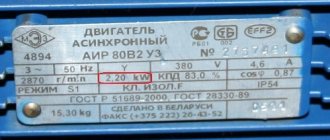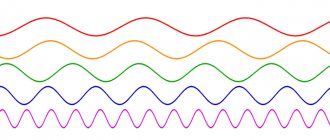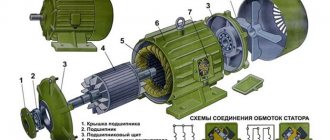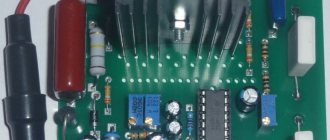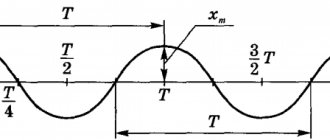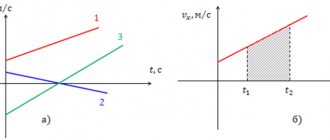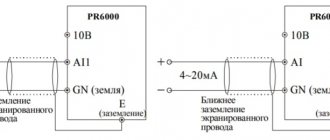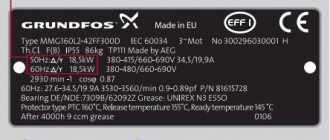The vast majority of wood and metal working machines, pumps, conveyor belts, hoists, overhead cranes, and other lifting and production equipment are driven by AC electric motors.
For trouble-free operation of each mechanism, correctly selected drive power and optimal rotation speed of the motor shaft are necessary.
Synchronous and asynchronous motor speed
The three-phase voltage supplied to the stator windings generates a moving magnetic field in it, rotating at a constant speed. This value is called “synchronous rotation speed”, since it depends on the frequency of the supply voltage, as well as the number of pole pairs. It is calculated using the formula:
Nс=f*60/p, where: Nс is the number of revolutions of the stator magnetic field per minute (rpm) f is the frequency of the current in the supply network (Hz) 60 is the number of seconds in a minute p is the number of pole pairs of the electric motor
In supply networks with a current frequency of 50 Hz, the maximum synchronous rotation speed of the stator magnetic field of asynchronous motors cannot exceed 3000 rpm. Such characteristics are inherent in electric motors with one pair of poles, that is, those in which each of the three windings has only one pair of poles: “N” - north and “S” - south. For example, AIMUR 90 L2 IM1081; AIR 112 M2 IM2001; 5AI 71 B2 IM3001 and others.
This is due to the fact that one full revolution of the stator magnetic flux in each of the windings is completed during one period of changing the direction of current movement, that is, in 1/50 s. This means that we get those same 3000 rpm per minute. As the poles increase, the synchronous speed decreases. Thus, the synchronous frequency of the 5AI 80 A4 IM1081 and 1MA6183-4BC motors is 1500 rpm, and the 5AI 355 L10 or AIR 250 S10 IM2001 motors is only 600 rpm.
The actual (asynchronous) speed of the motor shaft is always less than its synchronous value. This is explained not only by losses due to air resistance and friction in bearings, but by the very principle of operation of asynchronous electrical machines.
The difference between these values is called slip, expressed as a percentage and calculated by the formula:
s=((Nс-Nф)/Nc)*100), where s — slip Nс – synchronous speed of rotation of the stator magnetic flux Nф – actual (asynchronous) frequency
What is a spindle
A hard drive is a set of one or more sealed disk-shaped plates coated with a layer of ferromagnetic material and read heads in one housing. The plates are driven by a spindle (rotating shaft). The hard drive platters are fixed to the spindle at a strictly defined distance. When rotating the platters, the distance must be such that the read heads can read and write to the disk, but do not touch the surface of the platters.
The spindle motor must ensure stable rotation of the magnetic plates for thousands of hours for the disk to function properly. It is not surprising that sometimes disk problems are associated with a jammed spindle, and are not at all errors in the file system.
The motor is responsible for rotating the platters, and this allows the hard drive to operate. Due to the lack of contact, the hard drive can be rewritten an average of 100 thousand times. Also, the lifespan of the disk is affected by the hermetic housing (hermetic zone), thanks to which a space is created inside the HDD housing, cleared of dust and moisture.
This is what the spindles look like; each manufacturer may have a slightly different appearance. These are the spindles from Samsung screws.
or here's another selection.
spindle speed, or spindle rotation speed in Russian, determines how quickly the platters rotate during normal operation of the hard drive. It is measured in RpM, that is, revolutions per minute. RpM speed will determine how fast your computer will work, namely how quickly the computer can receive data from the hard drive.
How many times have I seen crappy laptops that had 4 GB of RAM, had an Intel core i3 or even i5 processor, but had a damn hdd with a rotation speed of 5400 rpm, and it was complete trash, such screws need to be pulled out immediately and installing ssd otherwise it would not work
The time it takes for the magnetic head unit to move to the requested track/cylinder is called seek latency or delay. After the read heads move to the desired track/cylinder, we must wait for the plates to rotate so that the desired sector is under the head - this is rotational latency time. And this is a direct function of the spindle speed. That is, the faster the spindle speed, the less rotation delay.
Why do you need to know the rotational speed of the electric motor shaft?
In the process of selecting a drive, you should ensure not only that the selected model corresponds to the specifics of use and operating conditions, but also that the rotation speed of the asynchronous motor corresponds to the power required for normal operation of the mechanism.
Thus, for lifting mechanisms (beam cranes, hoists, winches, various types of cranes), a high engine rotor speed is not needed. Such devices use models with synchronous speeds from 600 to 1000 rpm.
At the same time, the operating features of ventilation systems require that the rotor speed of the asynchronous motor be higher. Therefore, high-speed electric machines are used to complete them.
Depending on the required pressure characteristics and the required volumetric flow, the pumping equipment is equipped with motors with a synchronous rotation speed of 1500 or 3000 rpm.
Angular velocity
When a body moves in a circle, not all its points move at the same speed relative to the axis of rotation. If we take the blades of an ordinary household fan that rotate around a shaft, then the point located closer to the shaft has a rotation speed greater than the marked point on the edge of the blade. This means they have different linear rotation speeds. At the same time, the angular velocity of all points is the same.
Angular velocity is the change in angle per unit time, not distance. It is denoted by the letter of the Greek alphabet – ω and has a unit of measure: radians per second (rad/s). In other words, angular velocity is a vector tied to the axis of rotation of the object.
The formula for calculating the relationship between rotation angle and time interval is:
- ω – angular velocity (rad/s);
- ∆ϕ – change in the angle of deflection when turning (rad.);
- ∆t – time spent on deviation (s).
The designation of angular velocity is used when studying the laws of rotation. It is used to describe the motion of all rotating bodies.
Angular velocity in specific cases
In practice, they rarely work with angular velocity values. It is needed in the design development of rotating mechanisms: gearboxes, gearboxes, etc.
You can calculate it using the formula. To do this, use the connection between angular velocity and rotational speed.
- π – number equal to 3.14;
- ν – rotation speed, (rpm).
As an example, the angular velocity and rotational speed of the wheel disk when moving a walk-behind tractor can be considered. It is often necessary to reduce or increase the speed of the mechanism. To do this, a device in the form of a gearbox is used, with the help of which the speed of rotation of the wheels is reduced. At a maximum speed of 10 km/h, the wheel makes about 60 rpm. After converting minutes to seconds, this value is 1 rpm. After substituting the data into the formula, the result will be:
For your information. A reduction in angular velocity is often required in order to increase the torque or tractive effort of mechanisms.
How to determine angular velocity
The principle of determining angular velocity depends on how the circular motion occurs. If uniform, then the formula is used:
If not, then you will have to calculate the values of the instantaneous or average angular velocity.
The quantity we are talking about is a vector quantity, and Maxwell’s rule is used to determine its direction. In common parlance - the gimlet rule. The velocity vector has the same direction as the translational movement of a screw with a right-hand thread.
Let's look at an example of how to determine the angular velocity, knowing that the angle of rotation of a disk with a radius of 0.5 m varies according to the law ϕ = 6*t:
The vector ω changes due to rotation in space of the rotation axis and when the value of the angular velocity modulus changes.
How to determine engine speed
This parameter must be indicated on the nameplate of the electrical machine, as well as its power, efficiency, winding connection diagram, current consumption, power factor (cos φ). However, there are situations when the information plate is missing or its condition does not allow the required data to be read.
The ideal option for determining asynchronous speed is to take measurements using a mechanical or laser tachometer. However, such devices are rarely found even in enterprises. It is possible to determine what engine speed is rpm without expensive equipment. To do this, it is enough to remember what synchronous speed is and what it depends on.
To find the desired parameter, you need to find out how many poles there are in the motor. This can be done with a simple analog milliammeter in current measurement mode. With the motor de-energized and disconnected from the driven mechanism, remove the terminal box cover. We find the beginning and end of one of the winding stators and connect the probes of the device to them.
We make a mark on the shaft and begin to rotate it in any direction, observing the milliammeter needle and counting the number of its deviations from the initial position. The resulting value will indicate how many poles there are in the motor under test. Next, we calculate the synchronous frequency Nc using the above formula.
Engine speed control
Sometimes it is necessary to change the rotation speed of the shaft of an electric machine. This may be necessary if the engine starts under load or during operation it is necessary to briefly increase the rotation speed. The most optimal option can be considered the inclusion of a frequency converter electric motor in the supply network.
A simpler solution is to install two or three-speed models and adjust the rotation speed by connecting different groups of windings. But this method has two drawbacks. The speed change does not occur smoothly, but in steps, and cannot be done without stopping the electric motor.
If you are unable to select an electric motor yourself or you doubt the correctness of the choice you have already made, you can contact the technical specialists of the Kabel.RF® company. After clarifying the operating conditions and purpose of the engine, they will select the optimal brand and size.
To place an order, call the managers of the Kabel.RF® company by phone or send a request by email indicating the required electric motor model, purposes and operating conditions. The manager will help you choose the right brand, taking into account your wishes and needs
